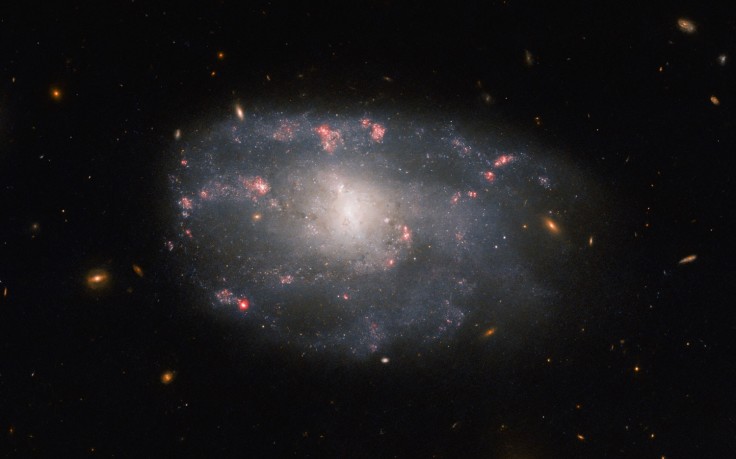Hubble shares another of its photographic achievements with the world despite its age.
NASA and the European Space Agency (ESA) published a new photo of the irregular spiral galaxy NGC 5486, a neighboring galaxy to the one Hubble previously aimed to take one of its best photos.
You can have a copy of Hubble's latest picture of NGC 4586 by downloading it from NASA's image feature page.
Hubble's New Picture Of NGC 4586

Hubble's new picture of NGC 4586 is quite the looker. According to NASA's blog post, the spiral galaxy's disk is threaded through with pink wisps of star formation that stand out from its bright core. Space.com mentioned that the NGC 4586 is also a gathering of new stars, many of which could call the galaxy their birthplace.
NGC 4586 is located 110 million light-years away from Earth, and is situated in the constellation Ursa Major. The galaxy neighbors the Pinwheel Galaxy, which Hubble is most familiar with; NASA and the ESA previously used Hubble to take photos of the Pinwheel Galaxy.
Thanks to this endeavor, NASA and the ESA managed to take the space telescope's largest and most detailed picture of a spiral galaxy in its existence.
Though the galaxy doesn't have a defined shape or structure due to the gravity of a larger neighboring galaxy, it did play host to a star that went supernova in 2004, allowing scientists to study the debris and remains of the star in better detail than others.
In fact, the picture Hubble took of NGC 4586 was for this exact reason. NASA stated that the picture came from a selection of Hubble images exploring the debris left behind by the star that underwent a type 2 supernova in 2004.
The space agency explained that the large stars that go through a type 2 supernova cast off huge amounts of gas and dust before ending their lives in a spectacular explosion in space. Astronomers would use the photo Hubble shot of NGC 4586 with its Advanced Camera for Surveys to explore the explosion's aftermath to learn more about supernovas.
The Future Of The Hubble Space Telescope
While there are talks within the scientific community about the fate of Hubble, it is still being used to take pictures of high-quality pictures of the universe to help experts in many scientific studies and observations.
Beth Biller, an astronomer at the University of Edinburgh and chair of the committee representing scientists that use Hubble, said there is still work to do with Hubble; its unique capabilities keep it from being decommissioned.
Biller mentioned that Hubble covers Webb's shortcomings through its ability to view the universe in other wavelengths, allowing it to take images of celestial bodies and objects near Earth.
Unfortunately, Earth's gravitational pull is taking Hubble closer to Earth. Experts believe that come the mid to late 2030s, Hubble will eventually slip into the planet and retire in a blaze of glory.
However, it is up to experts if Hubble should be boosted up to its original orbit or if it should do a controlled reentry into the South Pacific.









